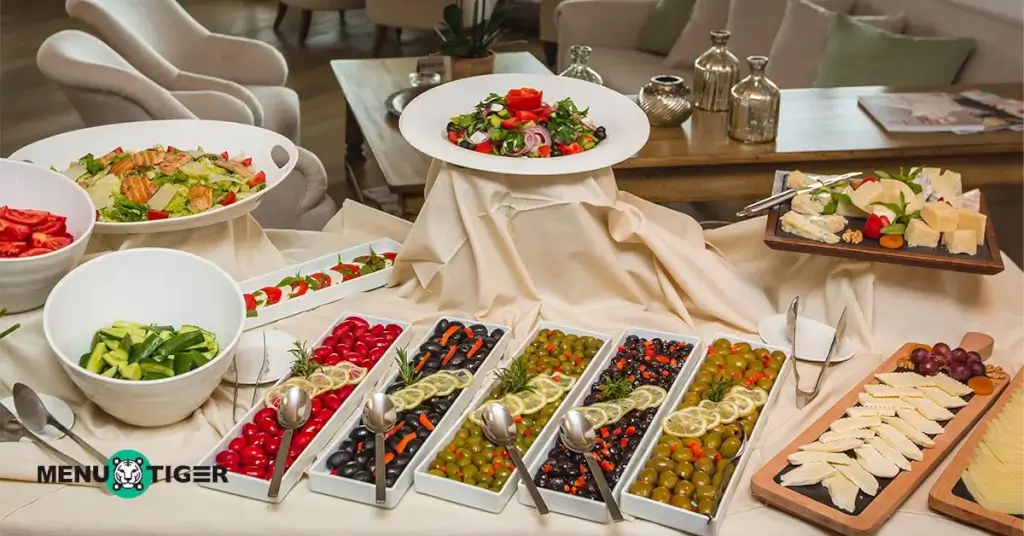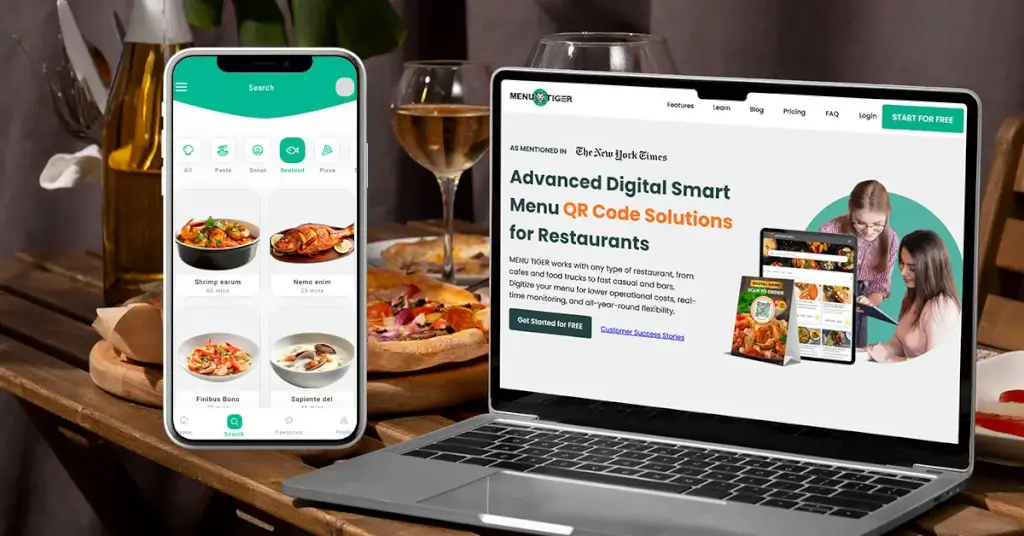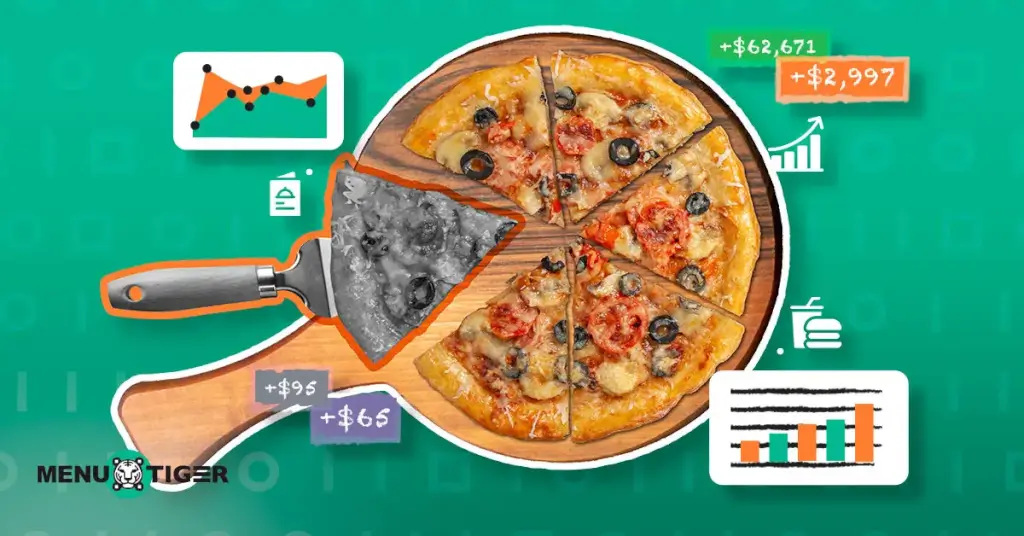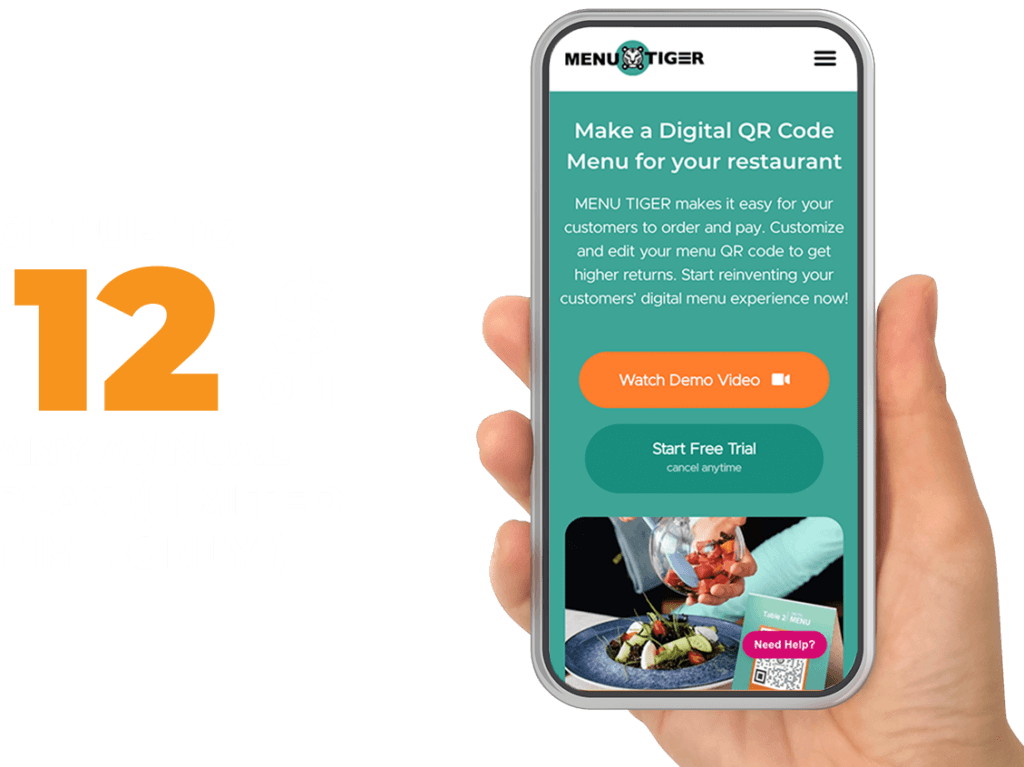Running a restaurant is not a cushy job. One faces challenges posed by the industry recession, volatile customer demands, or even a plummeting profit.
To keep your business afloat, you need to develop and implement strategies to stimulate customer retention and boost restaurant profit margins. But even that is not easy. And there is no linear way to push your business to success.
Securing a financially sustainable restaurant means being open to cost-cutting, menu changes, intensive marketing, leveraging restaurant ordering software, and offering additional services to customers.
If you need a helping hand in executing these strategies, you are on the right page. This is your guide to counter the risks in operating a restaurant and secure a healthy profit margin.
Table of Contents
ToggleWhat is the average restaurant profit margin?
A restaurant’s average profit margin typically ranges from 3% to 6%, depending on the type of restaurant and its operational efficiency.
While this may seem modest, it reflects the high restaurant cost including food, labor, rent, utilities, and marketing expenses.
Here’s a breakdown by type of establishment:
- Full-service restaurants (FSRs), especially fine dining or casual dining, usually fall within the 3% to 5% range. This is due to higher labor costs, table service, and often premium ingredients.
- Quick-service restaurants (QSRs), like fast food establishments, enjoy higher margins of 6% to 9% as they focus on high turnover, limited table service, and lower labor costs.
- Catering services can reach 15% to 25% due to predictable demand, bulk preparation, and event-based pricing.
So, what is a good profit margin for a restaurant?
While the average profit margin for restaurants is relatively low, a “good” profit margin exceeding 10% is achievable with smart cost management, optimized pricing strategies, and efficient operations.
By focusing on these areas, restaurateurs can increase profitability and ensure long-term success in the competitive food service industry.
Calculating the restaurant industry profit margin
You can use online tools and software to calculate your gross and net profit. However, it pays to know how to do it manually (or at least know the formula).
Gross profit margin
The gross profit margin is a key metric that indicates how efficiently a restaurant is generating profit from its core operations. It measures the percentage of revenue remaining after deducting the cost of goods sold (COGS), which includes expenses related to food and beverage preparation.
So, how do you calculate your restaurant’s gross profit margin? Here’s the formula:

If you end up with a gross profit margin of 65%, this means that for every $1 earned, you have retained $0.65 after covering food costs, while $0.35 goes to COGS.
High margins (those reaching 60% to 70%) indicate efficient cost management and strong pricing strategies.
While low margins (30% to 50%) may suggest high food costs, inefficient procurement, or restaurant menu pricing issues.
Net profit margin
The net profit margin, on the other hand, measures the percentage of revenue left as profit after all expenses, including operating costs, labor, rent, utilities, marketing, and other overheads, have been deducted. It’s a comprehensive indicator of a restaurant’s overall profitability.
To calculate your net in percentage, apply this formula:

So, what does your net profit margin tell you?
Having a net profit margin of 25% means that your restaurant retains $0.25 as profit for every $1 earned after you cover all expenses.
13 strategies to increase restaurant profit margin
Here are 13 actionable ways to improve your restaurant’s profit margin:
1. Optimize your menu

Menu engineering is a powerful strategy to identify and promote high-margin items.
You can start by conducting a thorough analysis of your menu, categorizing dishes into four groups: Stars (popular and profitable), Puzzles (profitable but not popular), Plow horses (popular but less profitable), and Dogs (neither popular nor profitable).
Focus on promoting and enhancing the stars, while considering tweaks to the puzzles to increase their appeal.
Simplify your menu by eliminating underperforming items that complicate operations and contribute little to your bottom line. Highlight high-margin items using strategic placement on your menu — such as the “golden triangle” (the areas your customers’ eyes naturally gravitate toward).
Additionally, make sure that descriptions and visuals for profitable items are enticing, as this can influence customer decisions.
2. Implement dynamic pricing
Dynamic pricing — adjusting prices based on demand — is a smart way to maximize profits.
For example, you can charge slightly higher prices during peak hours when demand is high, as customers are often willing to pay more for a premium experience during busy times.
Conversely, during slower periods, offer targeted discounts or promotions to fill seats and maintain a steady cash flow.
Dynamic pricing can also be applied to special events, holidays, or even specific menu items that experience higher demand, such as seasonal dishes.
3. Control food costs
Food costs can eat your margins if not managed carefully.
To control this, start by tracking ingredient usage and spoilage to identify areas of waste. Implement a robust restaurant inventory system that alerts you when items are overstocked or underutilized.
It’s also smart to build strong relationships with your suppliers to negotiate better pricing and payment terms.
Local sourcing can also enhance your restaurant’s appeal by highlighting farm-to-table practices, which resonate with today’s eco-conscious customers.
4. Enhance portion control
Standardizing portion sizes ensures consistency and minimizes waste.
Use measuring tools and train your staff to serve accurate portions, balancing cost savings with customer satisfaction.
Invest in portioning equipment like scales and scoops to guarantee precision in every dish. You can also regularly audit portion sizes to maintain quality and prevent over-serving, which can erode profits over time.
Also, it’s important to note that clear communication with the kitchen team about portion expectations helps avoid discrepancies that can lead to customer dissatisfaction or increased costs.
Pair these efforts with well-designed plating techniques to ensure dishes look appealing without the need for excess ingredients.
5. Cross-utilize ingredients
Design your menu so ingredients are used across multiple dishes. For example, a single protein or sauce can feature in various recipes.
This approach simplifies inventory management and reduces waste.
Another example is if you use roasted chicken as a primary ingredient in a salad, consider using it in sandwiches, pasta dishes, or as a topping for flatbreads.
Similarly, a versatile sauce like a tomato base can work for pasta, pizza, and as a dip for appetizers.
This strategy reduces the number of unique ingredients you need to stock and ensures that your perishable items are used efficiently before they spoil.
6. Upsell effectively
Train your staff to upsell high-margin items like appetizers, desserts, and beverages.
Encourage guests to add premium toppings or sides, boosting the average check size without increasing labor or overhead costs significantly.
Provide staff with specific scripts or suggestions to make upselling feel natural and beneficial for the customer.
For example, suggest pairing a dessert with a coffee or adding a premium cheese option to a burger.
Ensure staff are familiar with the menu’s most profitable items so they can confidently recommend them.
7. Introduce takeout, delivery, and catering services
Expanding your offerings beyond dine-in can create new revenue streams.
Partner with popular third-party delivery platforms to reach a wider audience, but be mindful of the fees they charge.
To retain more profits, setup an in-house delivery system, which you can manage through your website or app.
Offering takeout services with easy online ordering options can also attract customers who prefer to dine at home.
Plus, catering services for corporate events, parties, and special occasions can significantly boost revenue.
You can create tailored packages for different event sizes and market them through your website, social media, and local business partnerships.
8. Manage labor costs
Labor costs are one of the largest expenses that dwindles the restaurant industry’s profit margin. Cross-train employees to handle multiple roles, ensuring your team is versatile and efficient.

For example, a server trained for barback duties can fill in during peak hours, reducing the need for additional staff.
Implement role rotations to keep employees engaged and prepared for multiple responsibilities.
Use predictive scheduling tools to match staff levels with anticipated demand. These tools analyze historical data, weather patterns, and local events to ensure you are neither overstaffed nor understaffed.
Try also to implement performance incentives to motivate your employees to work efficiently while keeping their morale high.
9. Increase table turnover
Efficient service is important for maximizing seat utilization, that’s for sure.
To guarantee fast and streamlined service, train your staff to handle orders quickly without rushing guests.
Streamlining processes, like payment systems, can also help reduce wait times. You can implement handheld order-taking devices to send orders directly to the kitchen, reducing delays.
Design your layout and workflow to optimize movement and minimize busy-hour bottlenecks.
10. Promote high-margin beverage sales
Beverages often have higher profit margins than food. You can highlight specialty drinks like craft cocktails, mocktails, or unique coffee blends.
Creating a thoughtful beverage menu can significantly impact your bottom line.
Experiment with seasonal drink offerings to align with customer preferences and create excitement.
For instance, introduce warm spiced beverages during winter or refreshing tropical options in summer.
Creating a happy hour menu with discounted prices on selected drinks can attract more customers during off-peak hours. This will help you increase volume and overall revenue.
11. Introduce seasonal specials
Rotating seasonal dishes keeps your menu fresh and allows you to take advantage of ingredients that are in abundance and cheaper.

Seasonal specials let you highlight flavors and produce that customers associate with specific times of the year. Think of pumpkin dishes in the fall or those citrus-based items in the summer.
Not only does this reduce ingredient costs, but it also aligns your menu with customer expectations.
12. Invest in cost-effective marketing
Focus on digital marketing strategies like social media campaigns, email newsletters, and collaborations with local influencers.
These low-cost methods can increase brand awareness and attract new customers.
Social media platforms like Instagram, Facebook, and TikTok allow you to showcase your restaurant’s personality, share visually appealing content, and engage with your audience directly.
You can regularly post updates about special offers, menu changes, or events to keep your followers engaged.
Email marketing, on the other hand, remains a cost-effective way to maintain customer relationships. Send newsletters to your subscribers with exclusive discounts, loyalty program rewards, or behind-the-scenes content.
You can also personalize your emails based on customers’ preferences to make them more engaging and relevant.
13. Leverage technology
Adopting the right restaurant technology can streamline operations and reduce costs.
A QR code menu system allow quick updates to pricing specials without reprinting costs. These digital menus also enhance the customer experience by providing additional details like allergen information or pairing suggestions directly at their fingertips.
Point-of-sale (POS) systems provide valuable data to help you refine your menu and staffing decisions.
Advanced POS systems can track inventory in real-time, reducing the risk of overordering or running out of key ingredients.
Moreover, customer relationship management (CRM) tools integrated with POS can analyze purchasing trends, enabling you to design personalized promotions or loyalty rewards.
Reservation management systems can also improve efficiency by optimizing table turnover and reducing wait times.
Lastly, consider leveraging kitchen display systems (KDS) to guarantee clear communication between the front and back of the house, minimizing errors and speeding up service.

How an online restaurant ordering system helps you improve your profit
Some online restaurant order system are just that — a platform to make and complete customer orders.
But this is not the case with MENU TIGER. This software is like a restaurateur’s partner in business: it offers a QR code-accessible and customizable digital menu, provides real-time customer analytics, and helps your digital marketing efforts (to name a few).

In fact, here are reasons why the MENU TIGER system aides in boosting your business’ profit:
Maximize revenue with direct online orders
Third-party platforms charge up to 30% commissions on every order. Uber Eats, for example, charges 6% to 30% for every order, depending on the chosen package. With an all-in-one software, like MENU TIGER, your customers can place orders directly through the platform — no intermediaries, no commission fees.
By keeping profits where they belong, you will see an immediate impact on your profit margins.
Powerful data analytics to drive growth
What if you knew your best-selling menu items or what hours bring the most sales? The built-in analytics dashboard, which you can access after logging in to your account, makes this possible.
With this, you can track top-performing dishes and daily trends, optimize your menu to focus on what sells and reduce wastage, and launch promos to boost slower sales hours.
Seamless order management and staff efficiency
Digital tools for restaurants should reduce manual processes and empower your team to focus on preparing great meals. This is how MENU TIGER assists your front-of-house.
It guarantees fewer errors since you can offer menu modifiers to ensure customers get exactly what they ordered.
Even better, you can connect it with your Loyverse system for inventory and reporting without any duplication of efforts.
Branded to represent your identity
Your restaurant deserves its spotlight — not to be another nameless option buried in a third-party marketplace. You will need a tool that helps you boost your restaurant branding strategies.
It’s a good thing the software comes with a white-label feature, allowing you to rename the default MENU TIGER domain into your own brand name.
Built for your budget
You can choose from the pricing tiers tailored to your business size.
For small restaurants, the solutions available are affordable alternative to traditional systems without sacrificing professional quality. For larger establishments, premium options bring advanced tools like whitelabeling, software integrations, and more.

The main takeaway here is to understand your restaurant’s financial aspect on a deeper level.
How much have you been spending? How much are you willing to spend? Is there anything more to spend on? Can you cut some expenses? And how much will you be left with at the end of the day?
Once you know the answers to all these questions, you can set a realistic restaurant profit margin goal or target. The higher the margin, the better.
Now, if you think a restaurant ordering software might come in handy to reach your goals, MENU TIGER is here to assist.
You can sign up for a free trial to see how it can improve your operations and help you hit your target.
FAQs
Restaurant profit margins are low due to high operating costs, including labor, food, rent, and utilities, combined with thin markups on menu items. Competition and the need for quality ingredients also impact profitability.
Restaurants can be profitable, but profitability varies widely based on location, management, menu pricing, and operational efficiency. While successful restaurants can yield significant returns, the industry is known for its high overhead costs and competitive nature.





